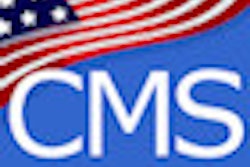Tobacco companies knew for more than four decades that cigarette smoke contained radioactive alpha particles, and the firms developed "deep and intimate" knowledge of these particles' cancer-causing potential, according to a new study (Nicotine & Tobacco Research, September 27, 2011).
But they deliberately kept their findings from the public, according to researchers from the University of California, Los Angeles (UCLA).
The analysis of dozens of previously unexamined internal tobacco industry documents, made available in 1998 as the result of a legal settlement, reveals that the industry was aware of cigarette radioactivity some five years earlier than previously thought and that tobacco companies, concerned about the potential lung cancer risk, began in-depth investigations into the possible effects of radioactivity on smokers as early as the 1960s.
"They knew that the cigarette smoke was radioactive way back then and that it could potentially result in cancer, and they deliberately kept that information under wraps," stated the lead study author Hrayr Karagueuzian, PhD, a professor of cardiology who conducts research at UCLA's Cardiovascular Research Laboratory, in a press release. "Specifically, we show here that the industry used misleading statements to obfuscate the hazard of ionizing alpha particles to the lungs of smokers and, more importantly, banned any and all publication on tobacco smoke radioactivity."
The radioactive substance -- which the UCLA study shows was first brought to the attention of the tobacco industry in 1959 -- was identified in 1964 as the isotope polonium-210, which emits carcinogenic alpha radiation. Polonium-210 can be found in all commercially available domestic and foreign cigarette brands, Karagueuzian said.
The study outlines the industry's growing concerns about the cancer risk posed by polonium-210 inhalation and the research that industry scientists conducted over the decades to assess the radioactive isotope's potential effect on smokers -- including one study that quantitatively measured the potential lung burden from radiation exposure in a two-pack-a-day smoker over a two-decade period.
Karagueuzian and his colleagues made independent calculations using industry and academic data, and arrived at results that very closely mirrored those of that industry study, which was conducted nearly a quarter century ago. They then compared those results with rates used by the Environmental Protection Agency (EPA) to estimate lung cancer risk among individuals exposed to similar amounts of alpha particle-emitting radon gas in their homes.
"The gathered data from the documents on the relevant radiobiological parameters of the alpha particles -- such as dose, distribution, and retention time -- permitted us to duplicate the industry's secretly estimated radiation absorbed dose by regular smokers over a 20- or 25-year period, which equaled 40 to 50 rads," he said. "These levels of rads, according to the EPA's estimate of lung cancer risk in residents exposed to radon gas, equal 120 to 138 deaths per 1,000 regular smokers over a 25-year period."
Karagueuzian said the findings are very timely in light of the June 2009 passage of the Family Smoking Prevention and Tobacco Control Act, which grants the U.S. Food and Drug Administration (FDA) broad authority to regulate and remove harmful substances -- with the exception of nicotine -- from tobacco products. The UCLA research, he said, makes a strong case that the FDA ought to consider making the removal of alpha particles from tobacco products a top priority.



















